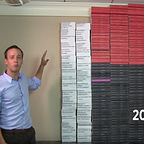How Do Regulations Affect Economic Growth?
By James Broughel
Earlier this month, the Mercatus Center at George Mason University published my new book, Regulation and Economic Growth: Applying Economic Theory to Public Policy. The book is a theoretical contribution to the literature on economic growth. While aimed primarily at academics — for use in research as well as in the classroom — it should also prove useful to lawmakers and regulators who are interested in learning more about how their policies impact growth.
The book reviews the most well-known growth models that economists have developed over the past 60 years, discussing the policy implications of each model and identifying what economists believe are important determinants of growth. It includes a classification system for making sense of the various types of growth “effects” that regulatory “shocks” can produce and also discusses some of the puzzles about economic growth that remain to be solved by economists.
In many ways, the book is releasing at an opportune time. Not only is economic growth a major concern right now, but regulatory reform is atop the policy agenda. As a recent example, the president’s fiscal year 2018 budget proposal predicts that US real GDP growth will increase to 3 percent per year by 2021, in part due to policies like regulatory reform.
Economic growth in the United States has been slow by historical standards, which is a reason why some are skeptical that the US economy will hit this 3 percent growth target. US real GDP growth has averaged just 1.3 percent per year over the last decade and 1.8 percent since the year 2000. For comparison, the US economy grew at an average rate of 3.6 percent per year over the second half of the 20th century, suggesting much higher growth rates are possible.
The economy faces some natural headwinds that are going to make faster growth harder to achieve today than in the past (most notably from an aging population). However, we also face some man-made headwinds. Below is an image from the conclusion of my book, showing how the number of regulatory restrictions in the US federal regulatory code has grown over the years. As is clear, there is an unambiguous upward trend in the level of regulation over time.
A relentless rise in the level of regulation is a problem for several reasons. First, it means that the complexity of the code is rising over time. Complexity makes compliance more difficult and discourages entrepreneurial activity. Second, as the code grows, this increases the likelihood of rules interacting with one another in unexpected ways.
These two costs — regulatory complexity and interaction effects — are generally missed when looking at individual rules in isolation. While individual regulations may be able impact the long-run growth rate of the economy in some very rare instances, it is the cumulative effect of all regulations working in concert that is likely to matter most for growth rates. In other words, if we continue to just look at rules one at a time, we are going to miss the forest for the trees.
The Trump administration is in the early stages of implementing a regulatory budget, which is a form of cap on rulemaking. A cap has several important benefits. First, it helps ensure the code does not become incomprehensible. A simple and straightforward code makes compliance easier for all rules and by extension makes it more likely that rules achieve desired outcomes. Second, policy outcomes are more predictable when the potential for unintended interaction effects is reduced. This will help in the design of regulations. Finally, a cap forces agencies to be constantly looking back at old rules (since adding new rules requires the elimination of old rules). At the moment, regulatory look-backs are not conducted in a systematic way, so a cap can help to create a culture of retrospective learning at agencies.
The growth models reviewed in my book offer lessons for what factors regulators should look at when reviewing their old rules (under a cap or any other system of review). For example, regulations impacting new technologies, investment of various sorts, trade, competition within and across industries, worker skill levels, and the ability of people to move to where they can be most productive, should all face close scrutiny.
These are just a few of the lessons found in my new book. For those interested in learning more, the book is available for free in PDF format, and inexpensive paperback and Kindle versions are available from Amazon.
James Broughel is a Research Fellow for the State and Local Policy Project at the Mercatus Center at George Mason University and an adjunct professor of law at the Antonin Scalia Law School.
